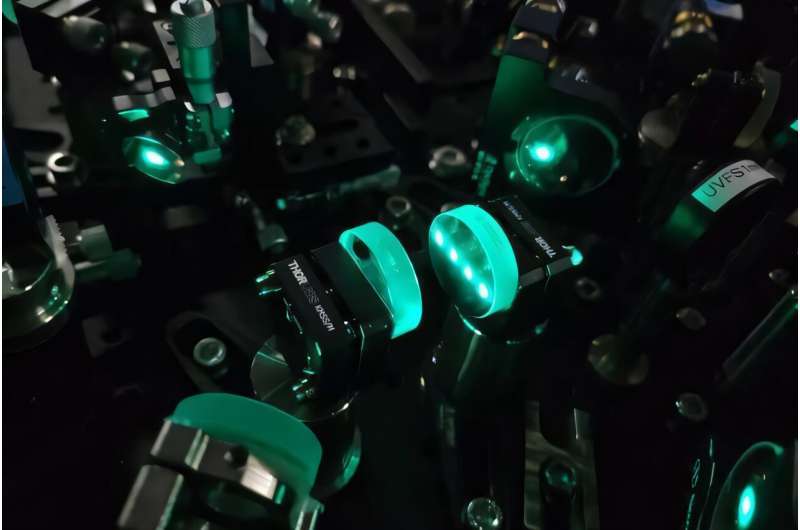Researchers Takuma Nakamura, Kazuki Hashimoto, and Takuro Ideguchi of the Institute for Photon Science and Technology at the University of Tokyo have increased by 100-fold the measurement rate of Raman spectroscopy, a common technique for measuring the “vibrational fingerprint” of molecules in order to identify them.
As the measurement rate has been a major limiting factor, this improvement contributes to advancements in many fields that rely on identifying molecules and cells, such as biomedical diagnostics and material analytics. The findings were published in the journal Ultrafast Science.
Identifying various types of molecules and cells is a crucial step in both basic and applied science. Raman spectroscopy is a widely used measurement technique for this purpose. When a laser beam is projected onto molecules, the light interacts with the vibrations and rotations of molecular bonds, shifting the frequency of the scattering light. The scattering spectra thus measured is a molecule’s unique “vibrational fingerprint.”
“Measurement is the foundation of science,” says Ideguchi, the principal investigator of the study, “and as such, we strive to achieve the highest performance in our measurement systems. Particularly, we are dedicated to pushing the boundaries of optical measurements.”
As Raman spectroscopy is a widely used measurement technique, there have been many attempts to improve it. One of its major limiting factors is its measurement rate, making it unable to “keep up” with the speed of changes in some chemical and physical reactions. The team set out to improve the measurement rate by building a system from scratch.
“I had been contemplating this idea for over ten years without being able to start the project,” says Ideguchi. “It was the new, optimal laser system we developed a few years ago that finally made progress possible.”
Leveraging their expertise in optics and photonics, the researchers combined three ingredients: coherent Raman spectroscopy, a version of Raman spectroscopy that produces stronger signals than conventional, spontaneous Raman spectroscopy, a specifically designed ultrashort pulse laser, and time-stretch technology using optical fibers.
As a result, they achieved a 50 MSpectra/s (megaspectra per second) measurement rate, a 100-fold increase compared to the fastest measurement of 50 kSpectra/s (kilospectra per second) so far. Ideguchi describes the wide-ranging potential of this improvement.
“We aim to apply our spectrometer to microscopy, enabling the capture of 2D or 3D images with Raman scattering spectra. Additionally, we envision its use in flow cytometry by combining this technology with microfluidics. These systems will enable high-throughput, label-free chemical imaging and spectroscopy of biomolecules in cells or tissues.”
More information:
Takuro Ideguchi et al, Broadband coherent Raman scattering spectroscopy at 50,000,000 spectra/s, Ultrafast Science (2024). DOI: 10.34133/ultrafastscience.0076
Provided by
University of Tokyo
Citation:
Scientists successfully increase measurement rate of Raman spectroscopy by 100-fold (2024, October 23)
retrieved 23 October 2024
from https://phys.org/news/2024-10-scientists-successfully-raman-spectroscopy.html
This document is subject to copyright. Apart from any fair dealing for the purpose of private study or research, no
part may be reproduced without the written permission. The content is provided for information purposes only.

